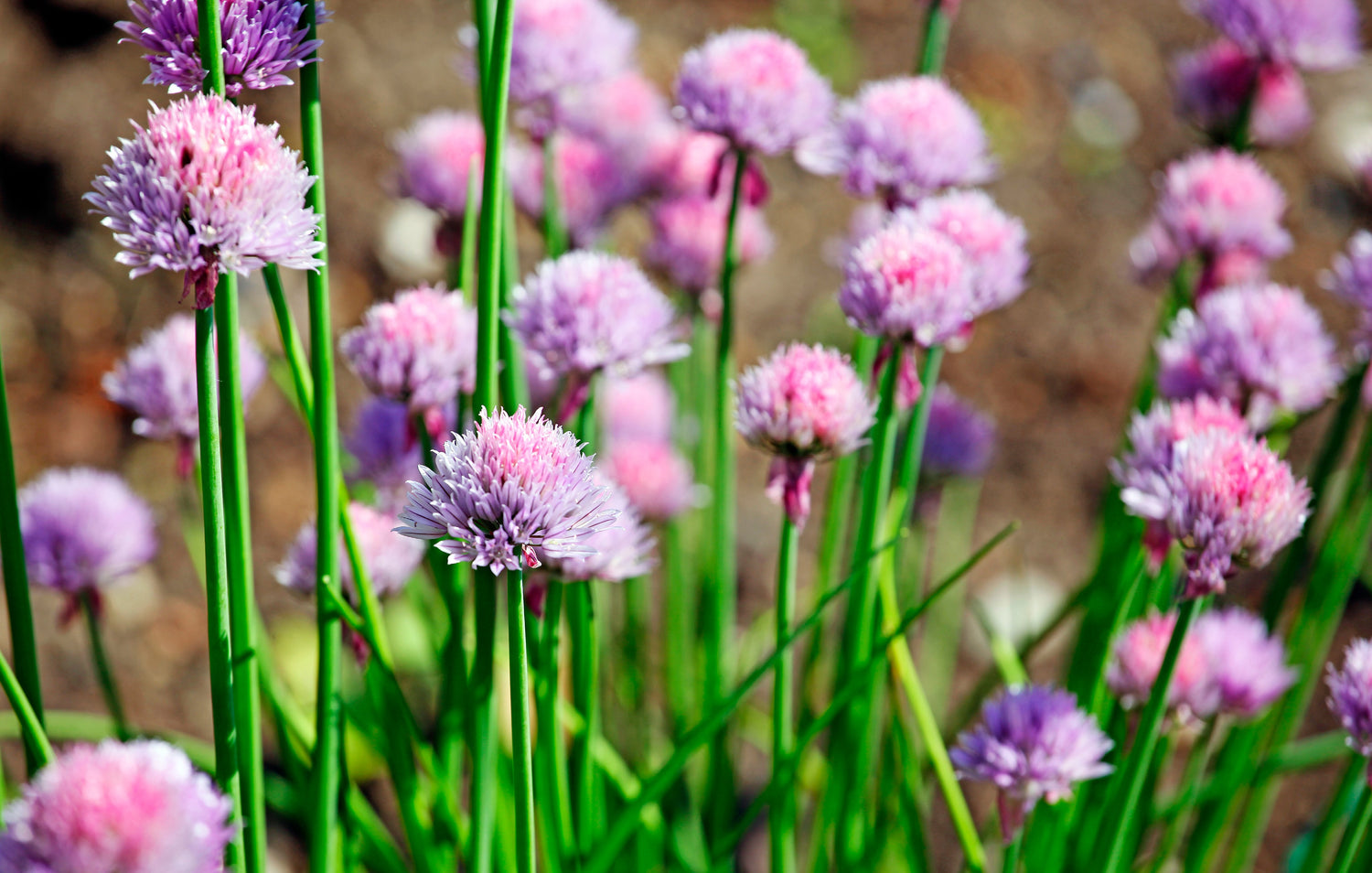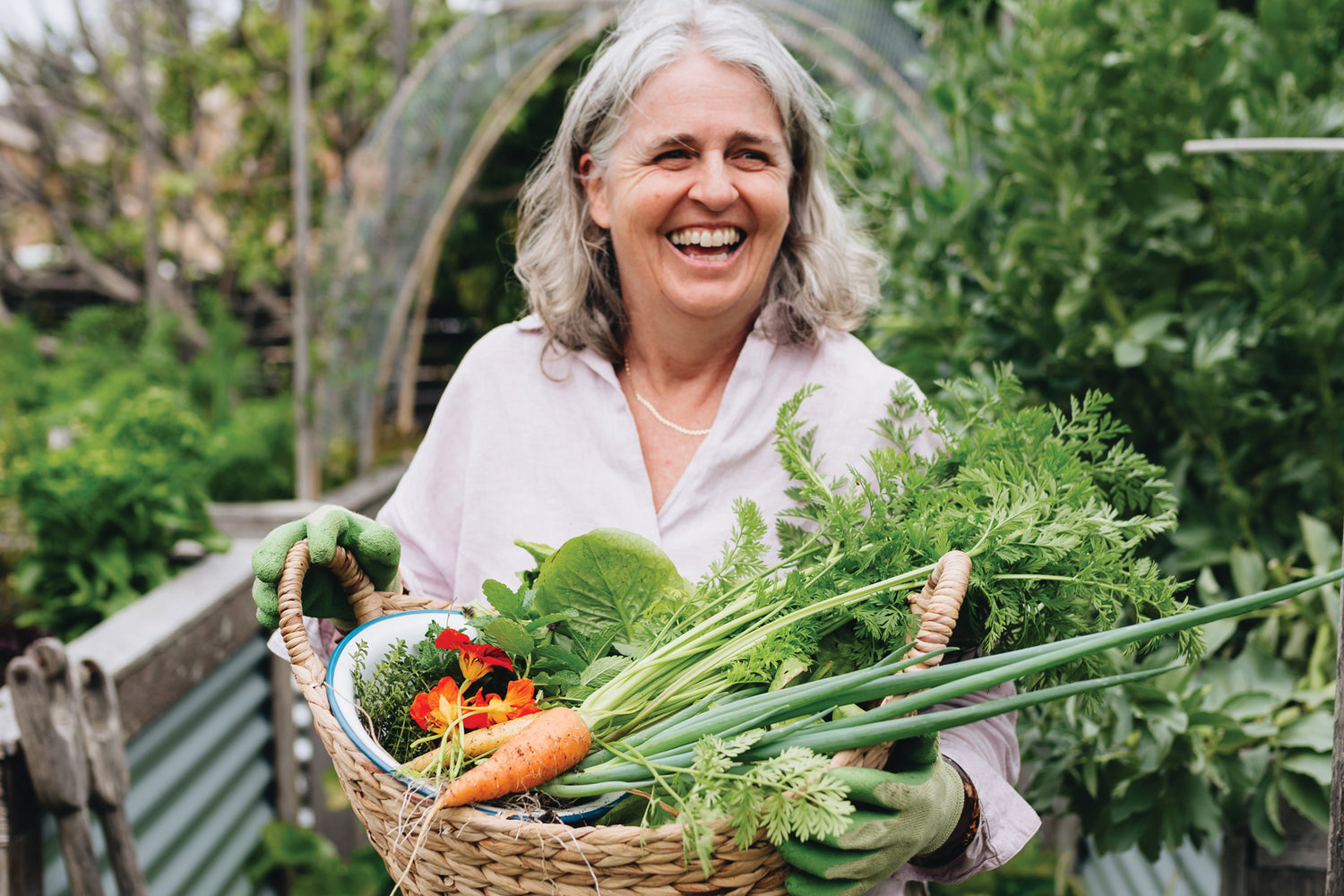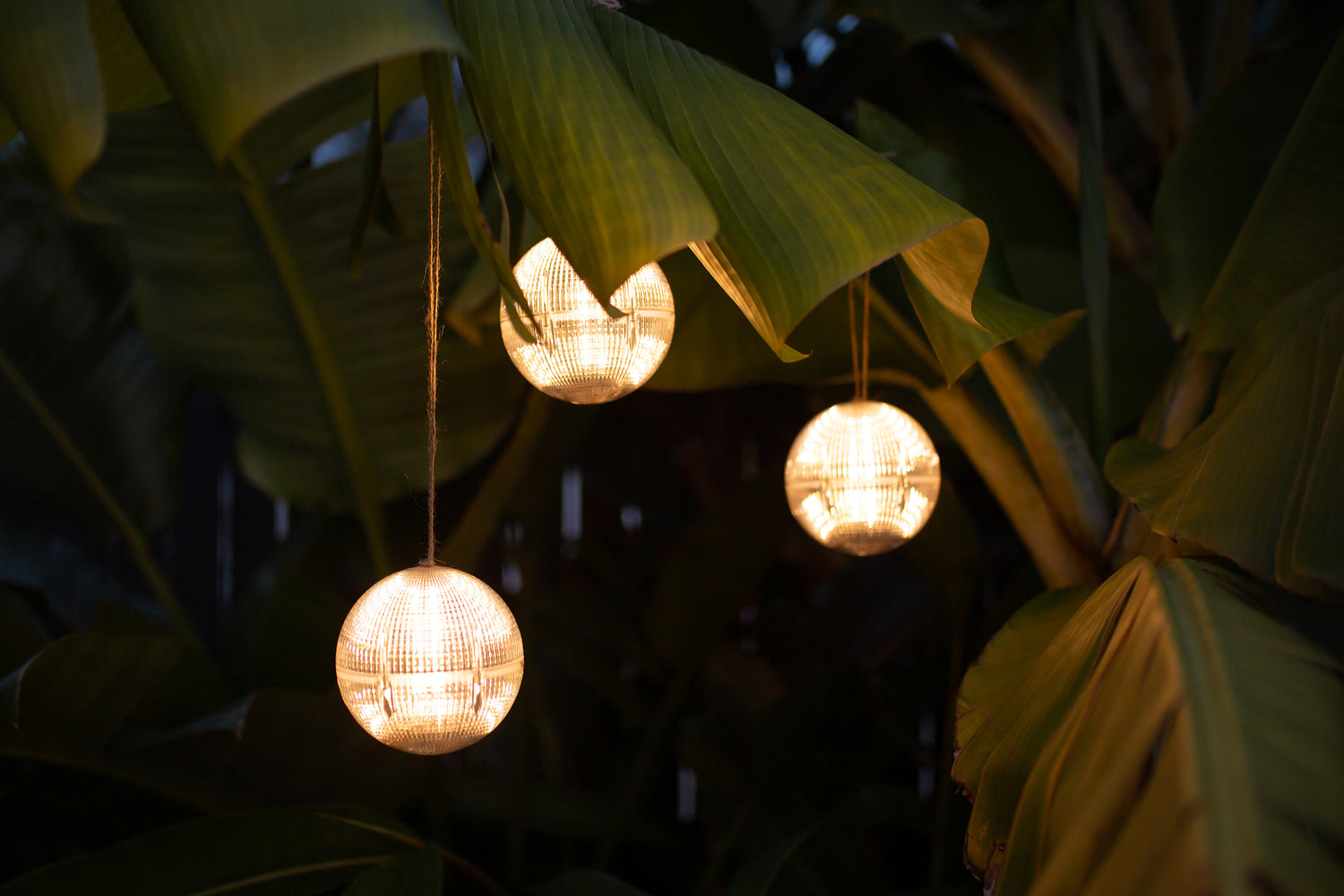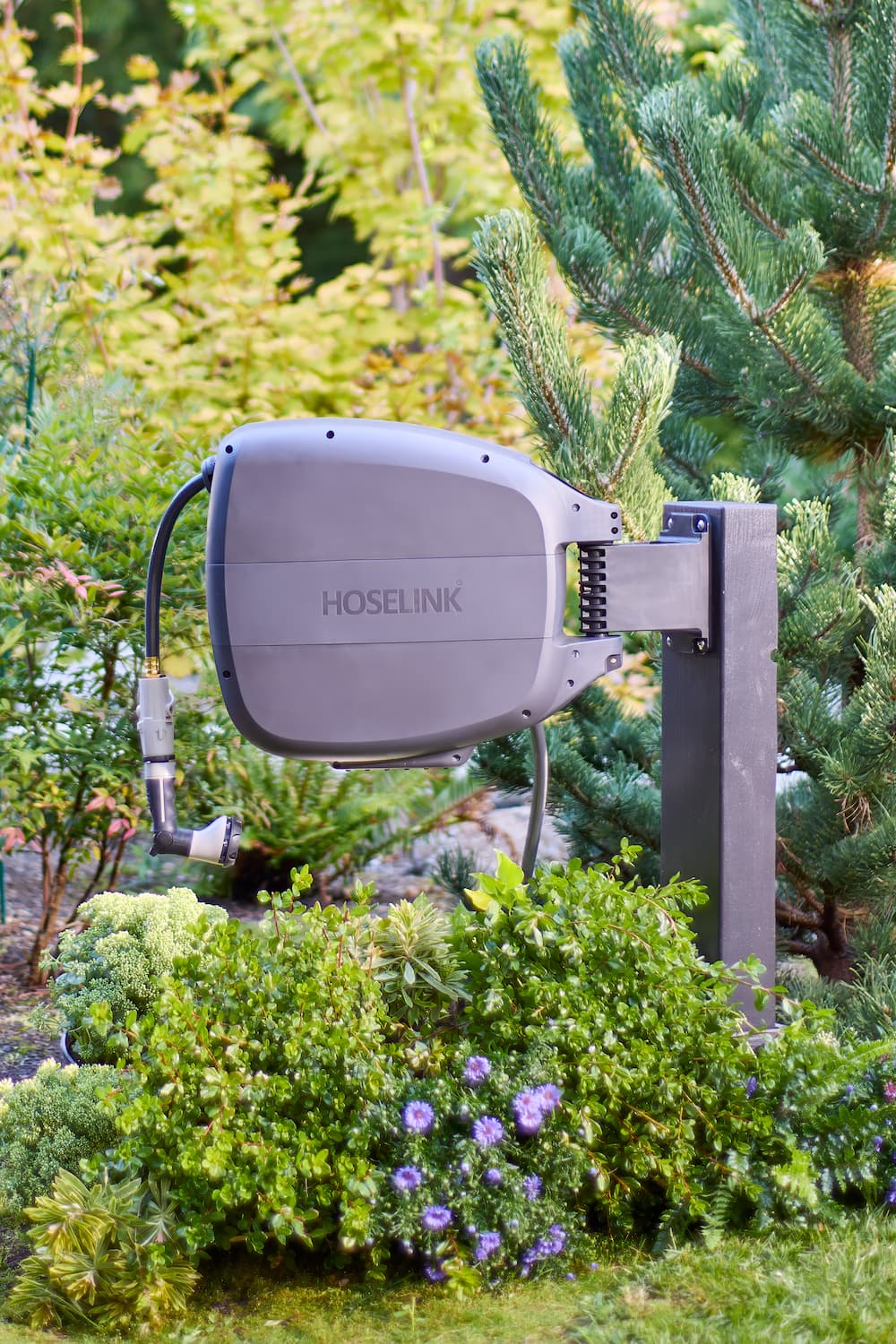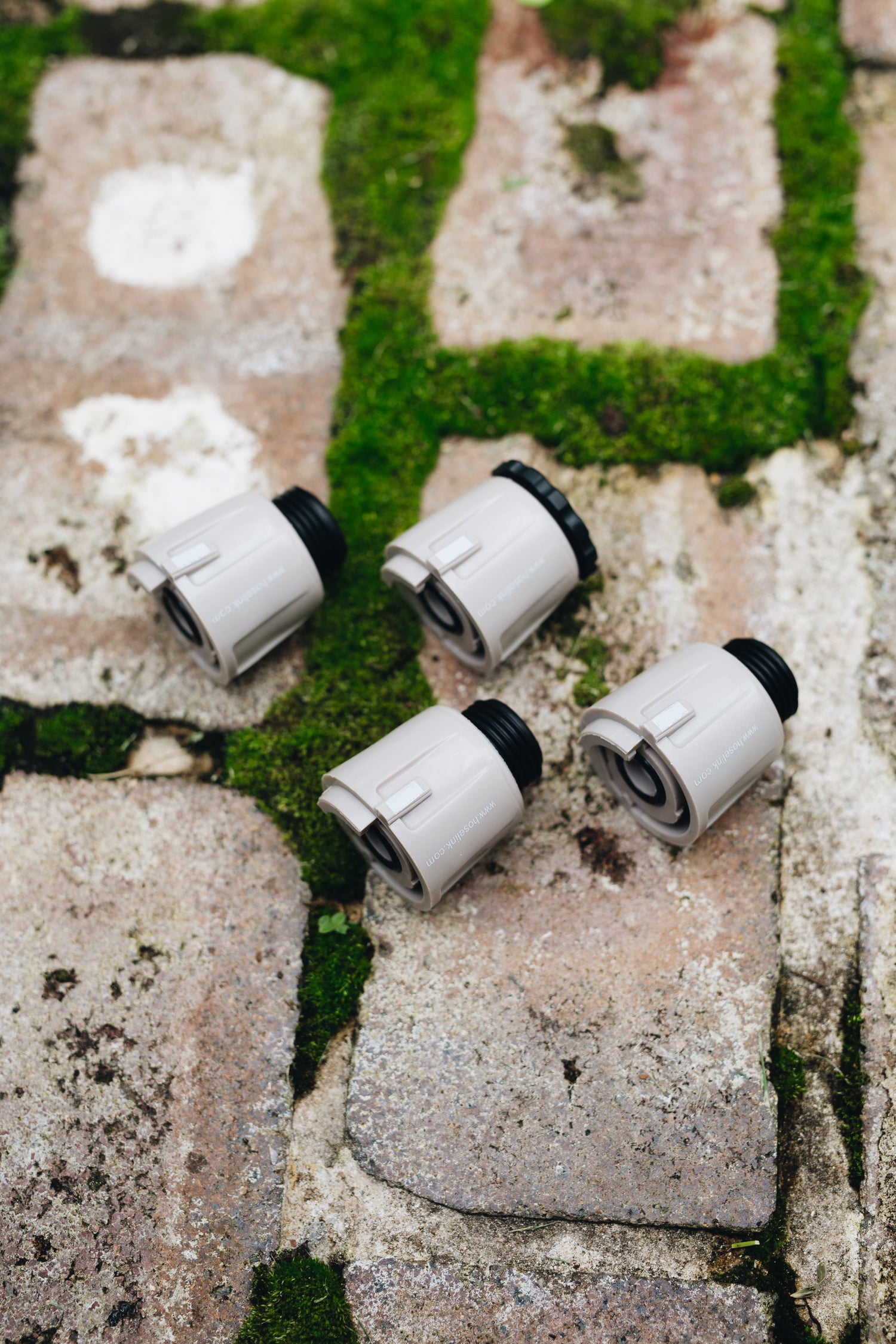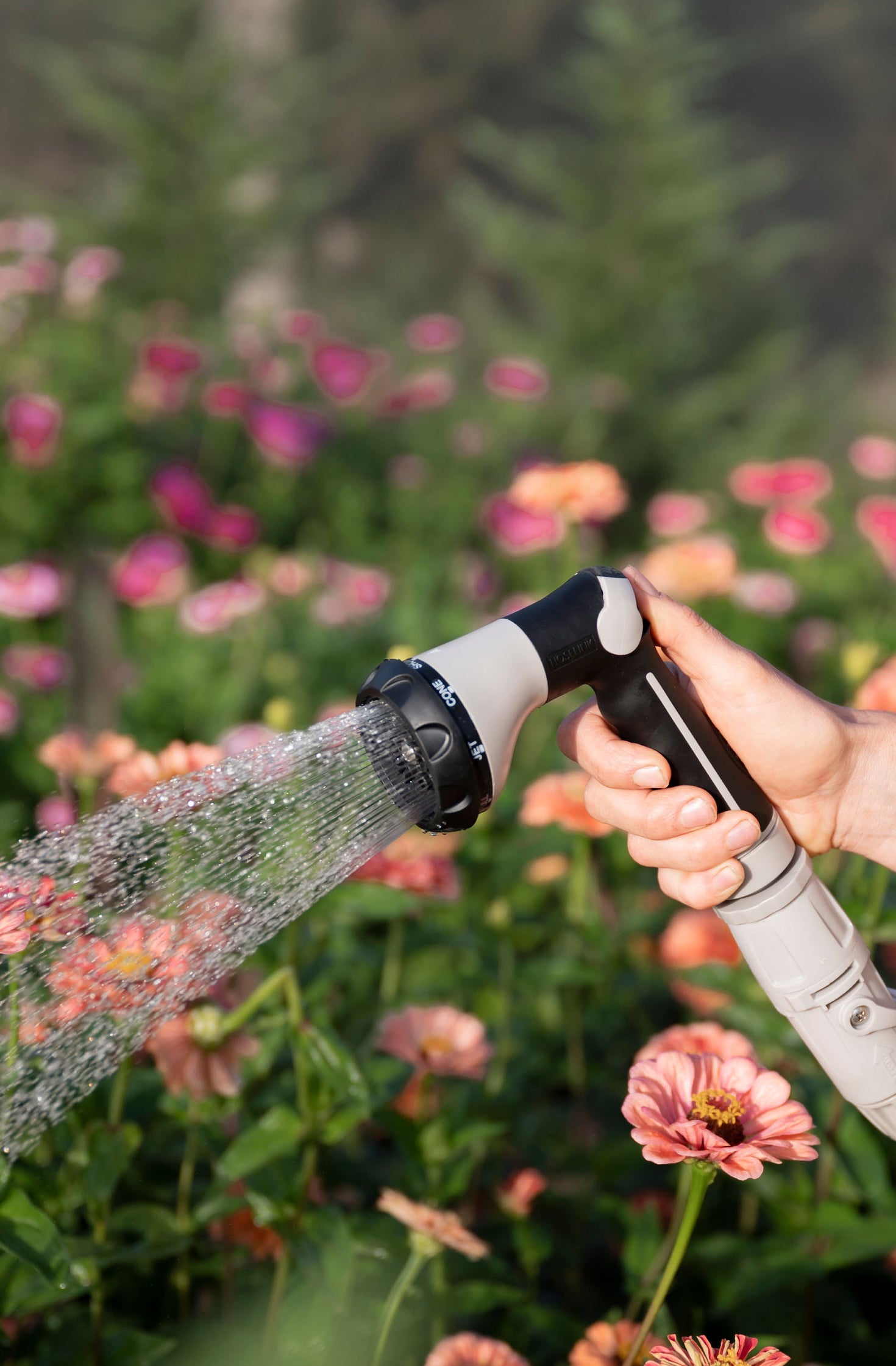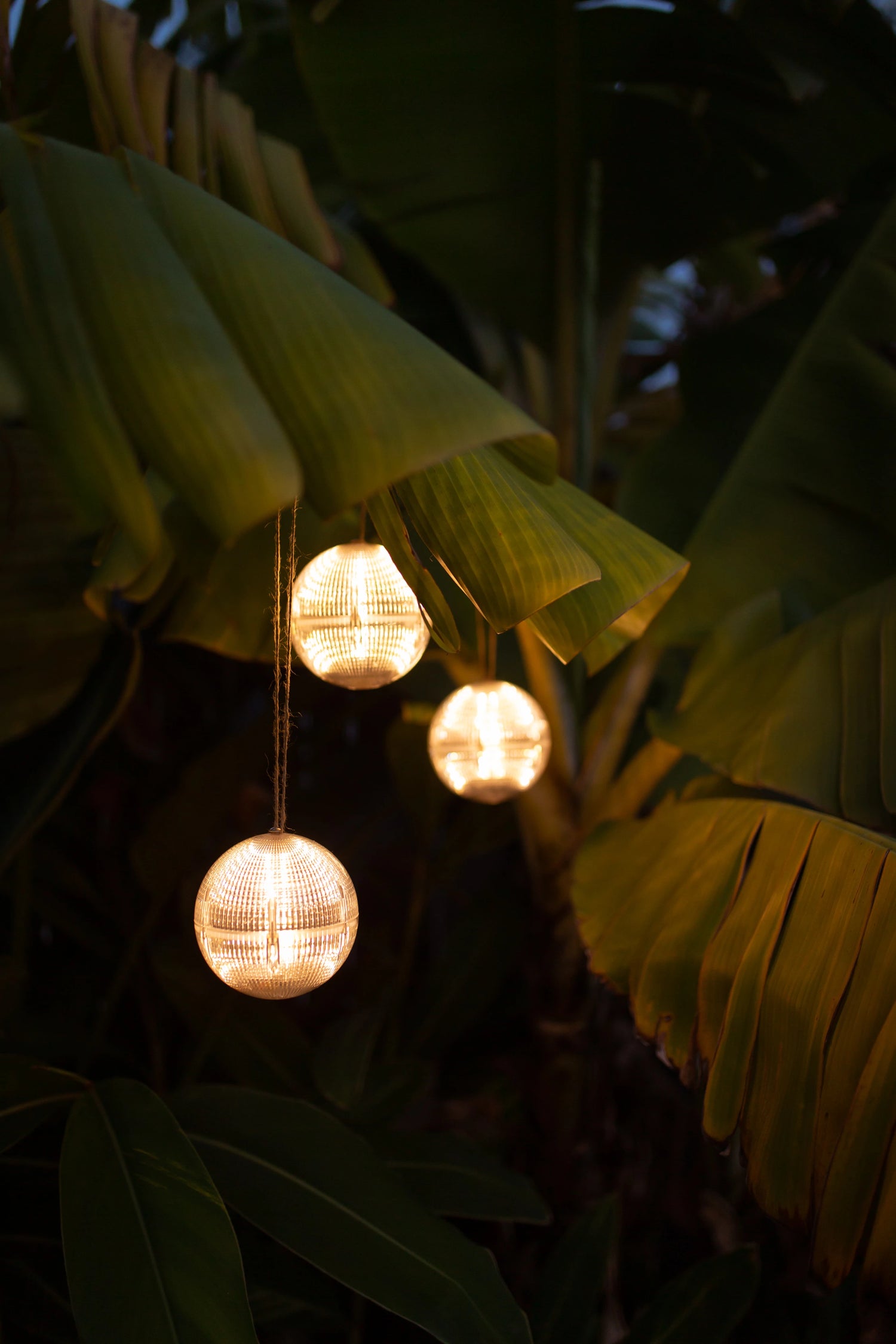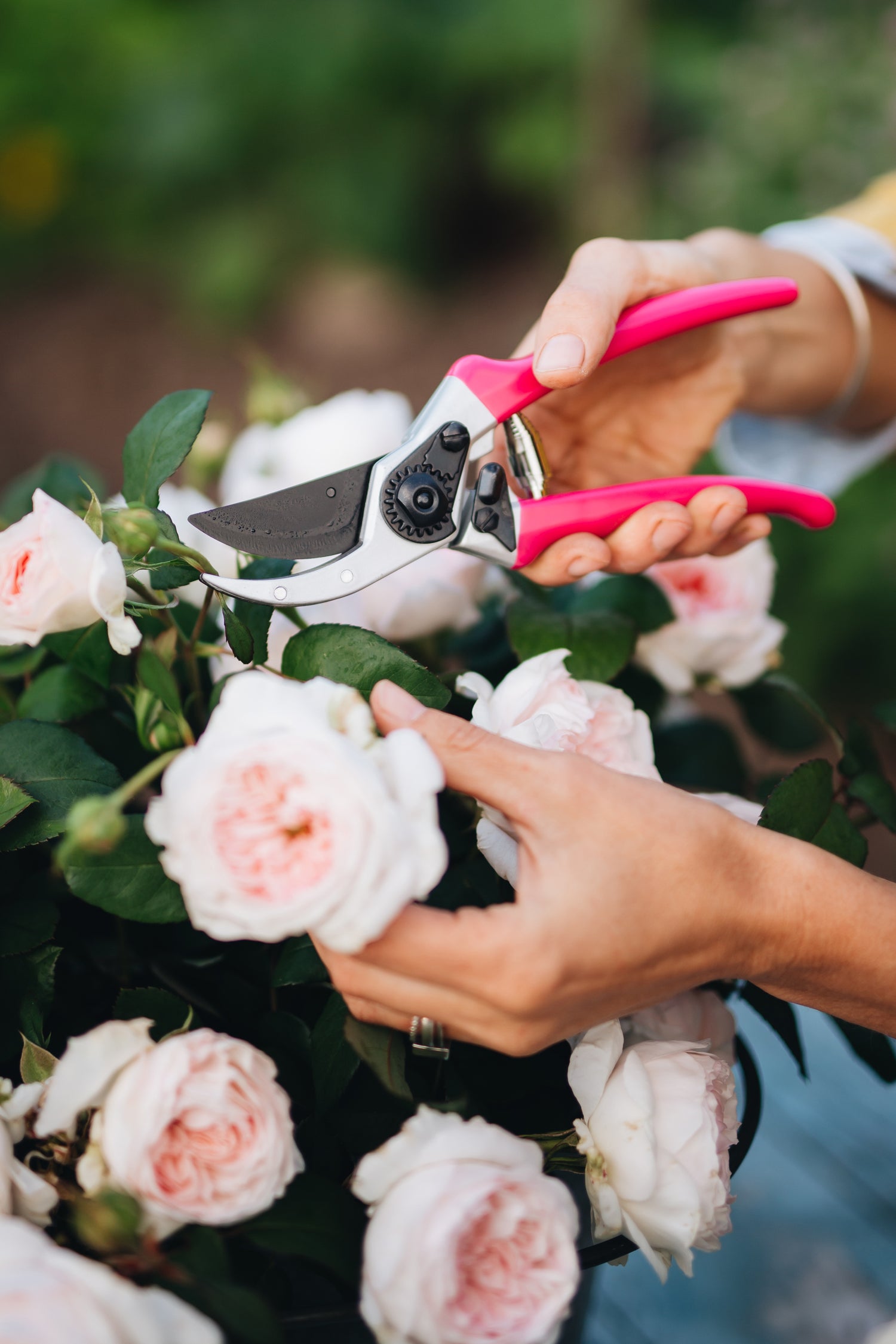Alliums are a wonderful, multifunctional family of flowering and non-flowering plants from the onion and garlic family. Here is how you can successfully incorporate some alliums into your garden for a fresh pop of colour and learn how to gain from the health benefits that alliums have to offer.
An allium is a flowering plant with over 700 different species globally, some of which you may be very familiar with, like onions, garlic, and shallots. The word allium comes from the word ‘cultivated garlic’, and the plant serves many purposes in the garden. Some allium species are edible, like onions, chives, and garlic, while other varieties grow as a blooming flower that looks eye-catching in a garden bed.
What are alliums?
You may recognize some allium species by their blooms that appear in stunning shades of purple, white, blue, and yellow. Others you may remember from the kitchen. Growing alliums in your garden is relatively low maintenance and, better yet, allium plants are not desirable to chipmunks, rabbits, squirrels, and deer. There are two different types of alliums: regular (edible, e.g., scallions and garlic) and ornamental (flowering).
Ornamental alliums are versatile perennial flowers with long stalks, spherical blooms, and a very faint onion aroma. They can be placed in even the most crowded gardens to add a splash of color and interest. Alliums will grow in almost any soil as long as it’s well-drained. You can further enrich the soil with some organic compost mulch, which will also help stave off weeds. Alliums need hardly any water to thrive in your garden. In fact, too much water, especially at the root, may cause the bulb to rot. You may even find that the water from rainfall alone is enough for your alliums to thrive. With plenty of sunlight too (the more, the better), your alliums will be bursting from the flower beds in no time!
The ideal time to plant alliums is in fall, between September and November, before the soil is prone to freezing. For the best visual effect, scatter your alliums in groups of three or five. When it comes to planting allium bulbs, the rule for depth is usually two to three times the size of the bulb you are planting. For example, if you have a two-inch bulb, you want to plant it four to six inches deep. You also need to make sure you plant your alliums around six to eight inches apart. Onions and leeks thrive in USDA plant hardiness zones 5 through 10, while garlic grows in zones 4 through 8. One of the best things about alliums is that they are very tough plants resistant to any drought or cold weather. By late spring or early in the summer, you will have thriving alliums and blooming ornamentals throughout the garden!
You may be wondering what species of allium is best to plant in your garden for a bit of low-maintenance color or as a way to get some fresh herbs in the kitchen. Here are a few of our favorite alliums which not only look great, but in some instances, taste great too and, importantly, won’t break the bank:

Purple Sensation Allium
This allium’s flower has a stunning purple hue that will keep coming back year after year. Like most alliums, between September and November is the best time to pot them, and they require minimal maintenance, growing up to three feet in height.

Chives
Chives are a great herb to have in the kitchen. They have a mild onion flavor that goes well with soups, seafood, omelets, dips, and baked potatoes. The herb looks like long grass from which a pale purple flower grows. As they are a part of the allium family, they only require full to partial sun and occasional watering to flourish. Chives are delicious to eat, so avoid using pesticides or any other chemicals if you intend to consume them.

Star of Persia
This beautiful flower of the allium family grows over 100 flowers per head! Flowers can reach up to 12 inches in diameter and can grow up to two feet tall. Star of Persia flowers look great fresh or dried in any flower bouquet.

Pink Lily Leek
If you’re looking for a flower in the allium family that looks great when planted in masses, then the pink lily leek is an ideal choice for your garden. This flowering plant is smaller than the average allium, growing to approximately 18 inches tall, but is every bit as eye-catching with its magenta blooms forming a loose flower head.

Garlic Chives
Also known as Chinese chives, this edible allium blooms in late summer, forming a stunning two-inch-wide cluster of white flowers. Garlic chives go great in sauces, soups, and stir-fries. While these alliums boast a great flavor, be sure to avoid spraying with pesticides or any other chemicals if you intend to consume them.

Mount Everest
These alliums are super tall and make a great addition to any garden. With five-inch white globes, they are a stunning mix of white and green, perfect for breaking up an area with lots of color or for a beautiful bouquet. These blooms are long-lasting and look great in walkways, cottage gardens, and garden beds.

Ornamental Onion
This allium is award-winning for so many reasons. It looks just like a big purple firework! Ornamental onions grow up to 24 inches in height and mix well with late spring blooms. It is well known for attracting butterflies to the garden.
Health benefits of alliums
Alliums are packed with tons of nutrients, meaning they have lots of health benefits. If you’re using onions, garlic, leeks, scallions, or other edible alliums, it is suggested you allow them to sit for a few minutes before adding an acid to it, such as lemon juice. The few minutes rest allow the enzymes to be released, helping the food react better with sulphur-containing molecules. If you want to reduce the tears when cutting up onions, try chilling the onion while it is still whole in the fridge for one hour, this will reduce the odor.
Another interesting fact about the benefits of eating alliums is that they could help to prevent osteoporosis. According to a study from the University of South Carolina, the regular consumption of onions improved bone density by 5%!
Life after flowering
Alliums will typically last for three weeks after blooming and do not repeat bloom. Once the flowers have died back, all you need to do is deadhead the spent blooms and leave the foliage. This will give the allium time to create new bulbs for the next season. After deadheading, the leaves will look a little flimsy, so be sure to plant something currently blooming like daylilies in front of it to hide your withering alliums until the next flowering season. Be sure to keep your alliums moderately watered until they turn yellow and shrivel. You can then cut them down to the ground using secateurs.
Happy gardening!

